Michelin-Starred Chef on Ichiju-Sansai
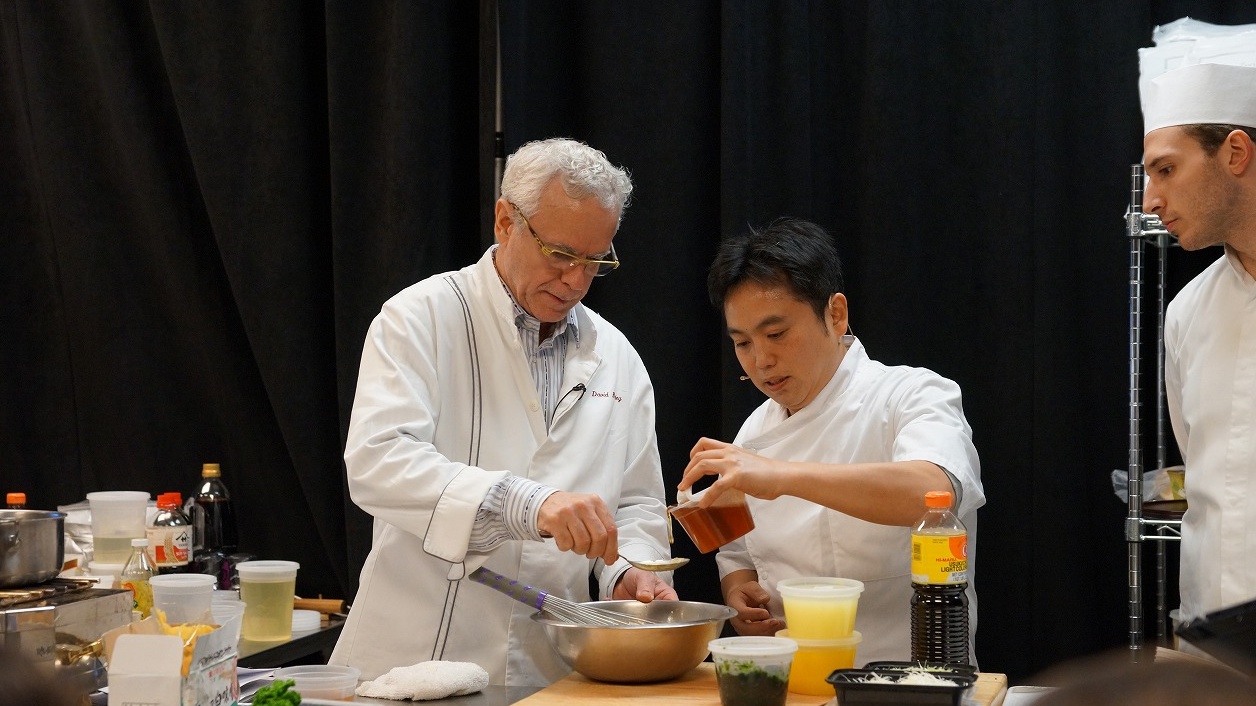
On February 5, 2016, legendary chef David Bouley of the Michelin-starred restaurant Brushstroke held a seminar on ichiju-sansai (one soup, three dishes) Japanese cuisine for chefs from Aramark Corporation at Washington D.C.'s Georgetown University along with Brushstroke's head chef Isao Yamada.
By Ichiju-Sansai Project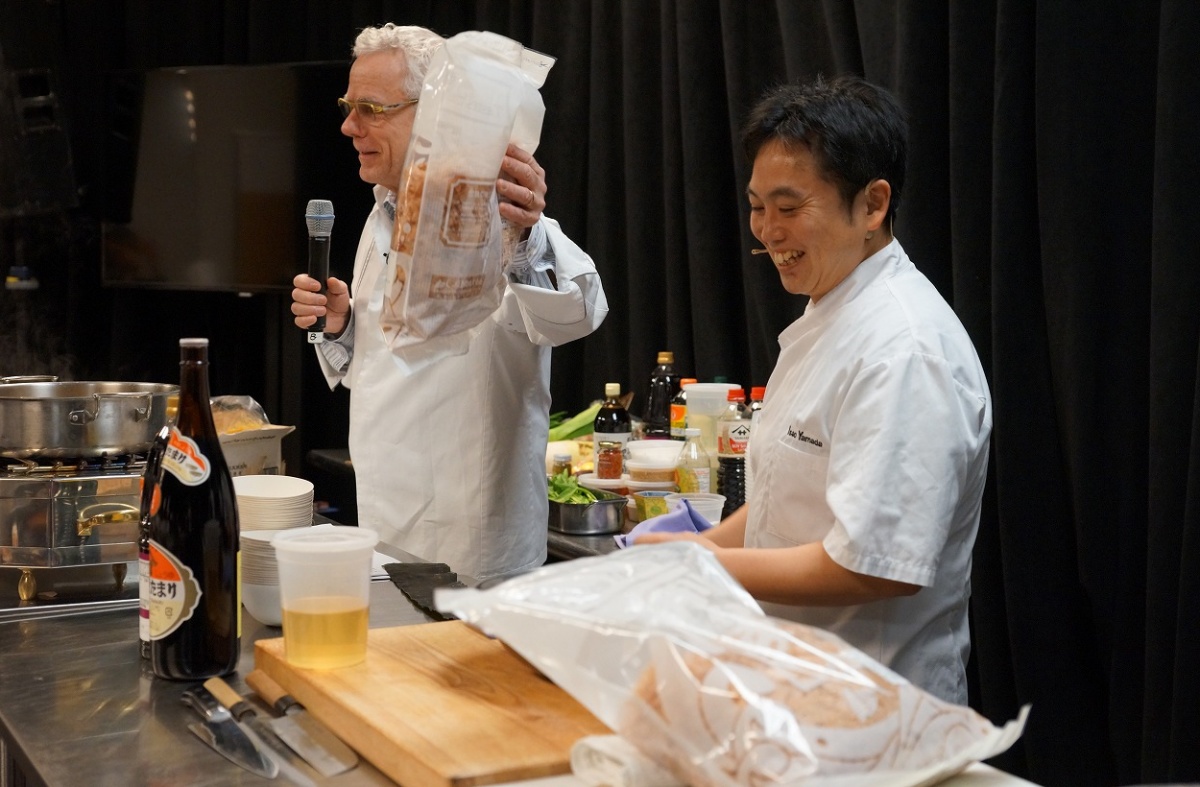
Aramark is one of the largest food service providers for educational institutions in the U.S. The seminar outlined elements such as the nutritional benefits of ichiju-sansai, its fundamental menu structure, and key qualities of ingredients from Japan. This was followed by a cooking demonstration of the basic techniques behind ichiju-sansai.
The seminar began with an overview explaining the basis of all Japanese cuisine: dashi. Dashi is a soup with deep umami flavor, imparted by boiling a broth of kombu kelp and bonito flakes. It's an indispensable cornerstone of Japanese cuisine that has a deep flavor yet not too much salt. "There are even some French chefs now who use dashi stock to cook bouillabaisse," Chef Bouley explained, inviting those present to use his extremely simple recipe to make it.
Another part of Japanese cuisine that cannot be missed is the use of fermented ingredients, such as miso and soy sauce. There are many varieties of soy sauce, of which Bouley introduced three: tamari soy sauce, dark soy sauce and light soy sauce. The best type of soy sauce to use depends on the desired dish: a light soy sauce is ideal for sashimi, while dark soy sauce suits simmered dishes and other applications. If you want to know more, Taste of Japan is a great source to check when buying Japnese seasonings.
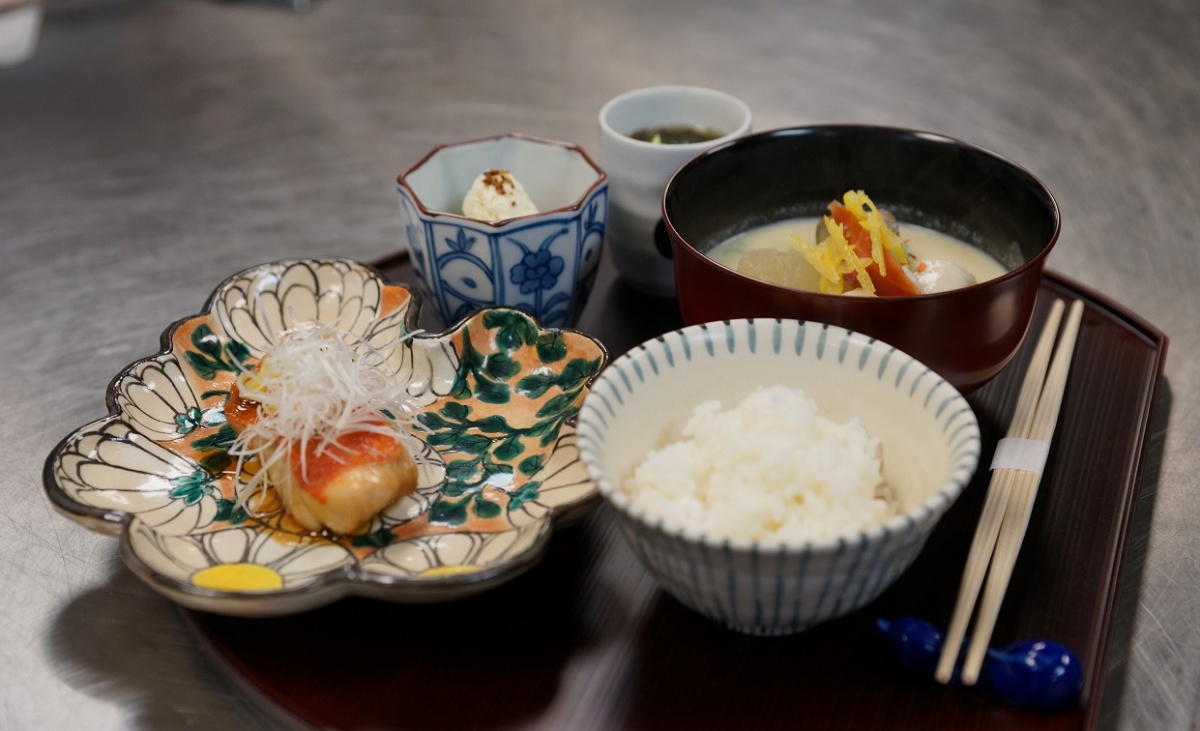
Bouley and Yamada followed up with a cooking demonstration highlighting fish as the main dish. You can find the recipe used for this demonstration here.
The technique known as Super Frozen is used by companies that deal with large quantities of fresh fish imports and exports. Using this technique, fish caught in the Sea of Japan are immediately frozen once brought up into the boat to preserve their ultimate freshness before directly exporting them to countries around the world. For this demonstration, a direct import of the splendid alfonsino fish was simmered to create a soft texture and deep, sweet flavor that astonished the chefs in the room.
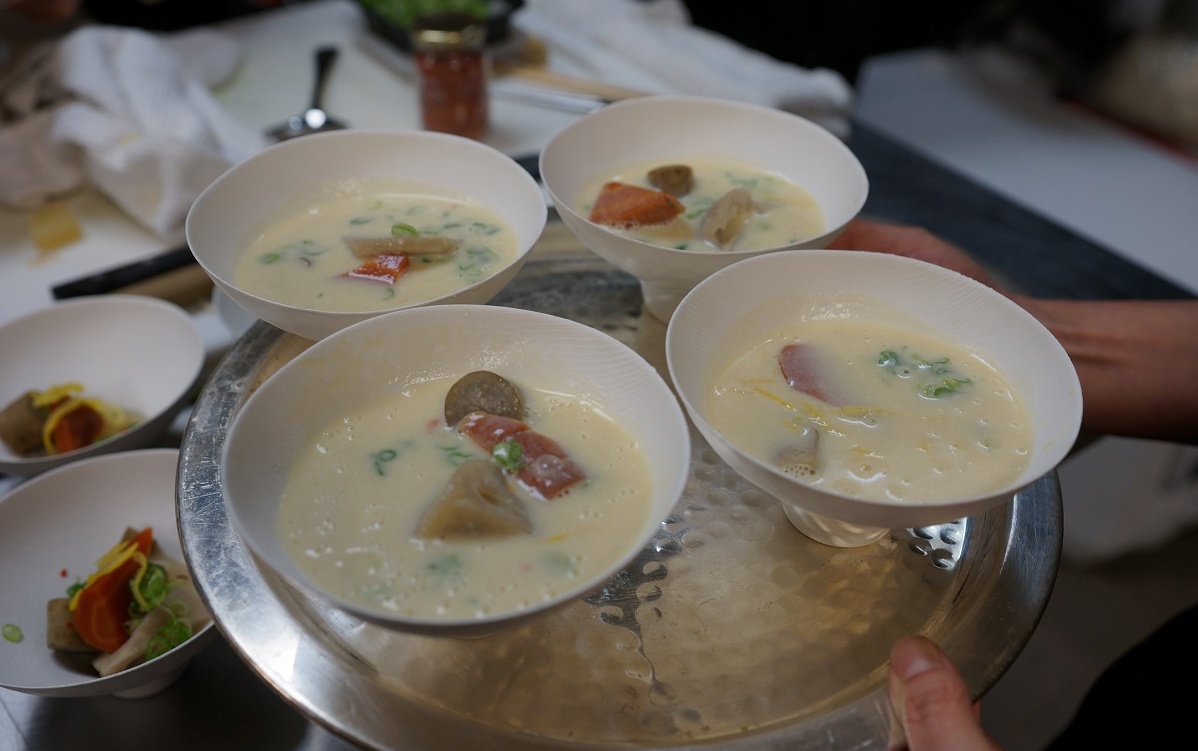
Kasujiru is a soup typically made from sake lees, the solid dregs that remain after the production of Japanese sake. However, in this case, it was made using root vegetables, since, as Yamada explained, it's important to use ingredients that are in season and match your ingredients accordingly. Topped with yuzu citrus, the result was a wonderfully rich flavor.

The next demonstration was a meat dish, for which the recipe can be found here.
"Humans have the ability to detect the five basic flavors of sweet, salty, sour, bitter and umami," Yamada explained. This dish was made to allow all five flavors to come through, thus heightening the appetite.
This meat dish was cooked in apple vinegar, and prepared with a dipping sauce of sweet vinegar that gave it a unique sweet-and-sour flavor. Yamada further explained that you can alter this recipe by switching the pork with chicken, for example.

The assembled chefs listened to the preparation instructions for the nukazuke dish particularly intently. It was prepared by fermenting vegetables in rice bran over a number of days. To do this, the vegetables and rice bran were placed in a large container and mixed every day until they were complete. Even chefs who were initially shocked by its smell asked for a second helping to eat with rice after tasting its delicately brined flavor for themselves. This type of cuisine is an important part of Japanese cuisine culture.
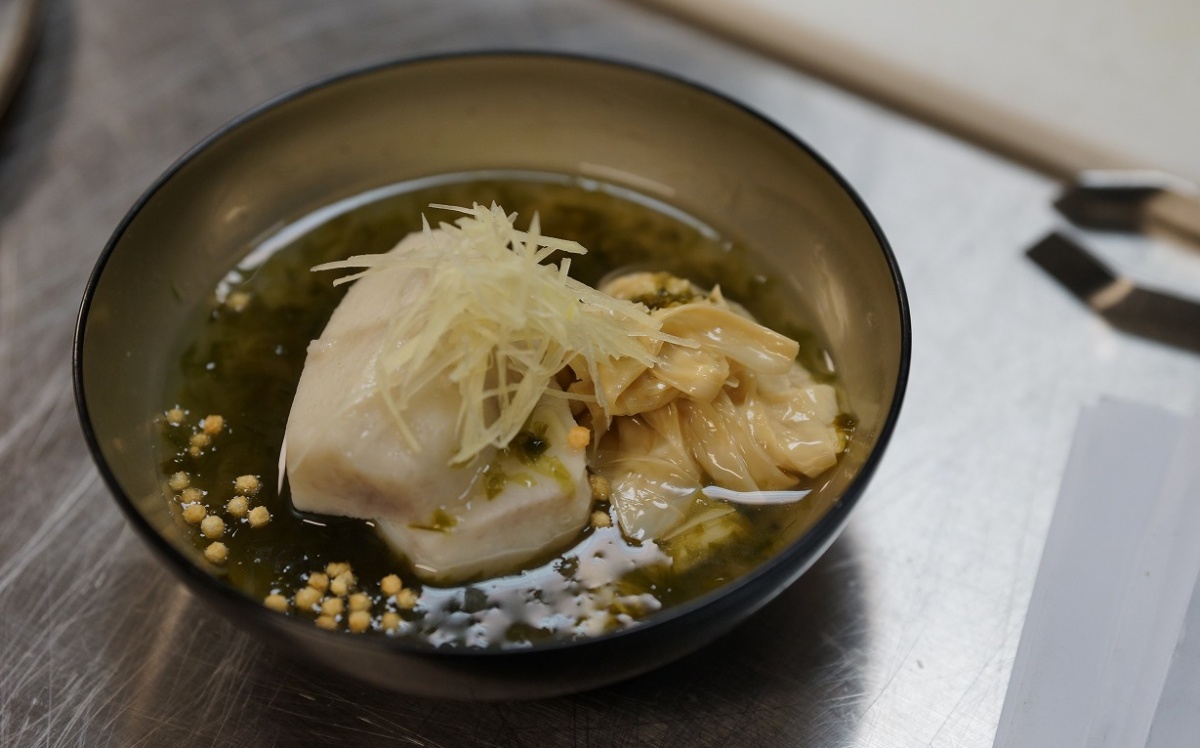
Of all of the Japanese ingredients used for the seminar, Chef Bouley particularly highlighted the yuba tofu skin dish. Yuba is made from the layer that forms at the top of boiled soy milk (it's the flat, noodle-like substance shown on the right-hand side of the photo above). Many people who hear that it's made from tofu expect it to have a very soft texture, but as Bouley explained, "Yuba has a great bite and elegant flavor," adding, "Yuba is wonderful for your health, so I'd even recommend eating it every day." This ingredient is often served at occasions like tea ceremonies, but it's not unusual to see it used at home as well.
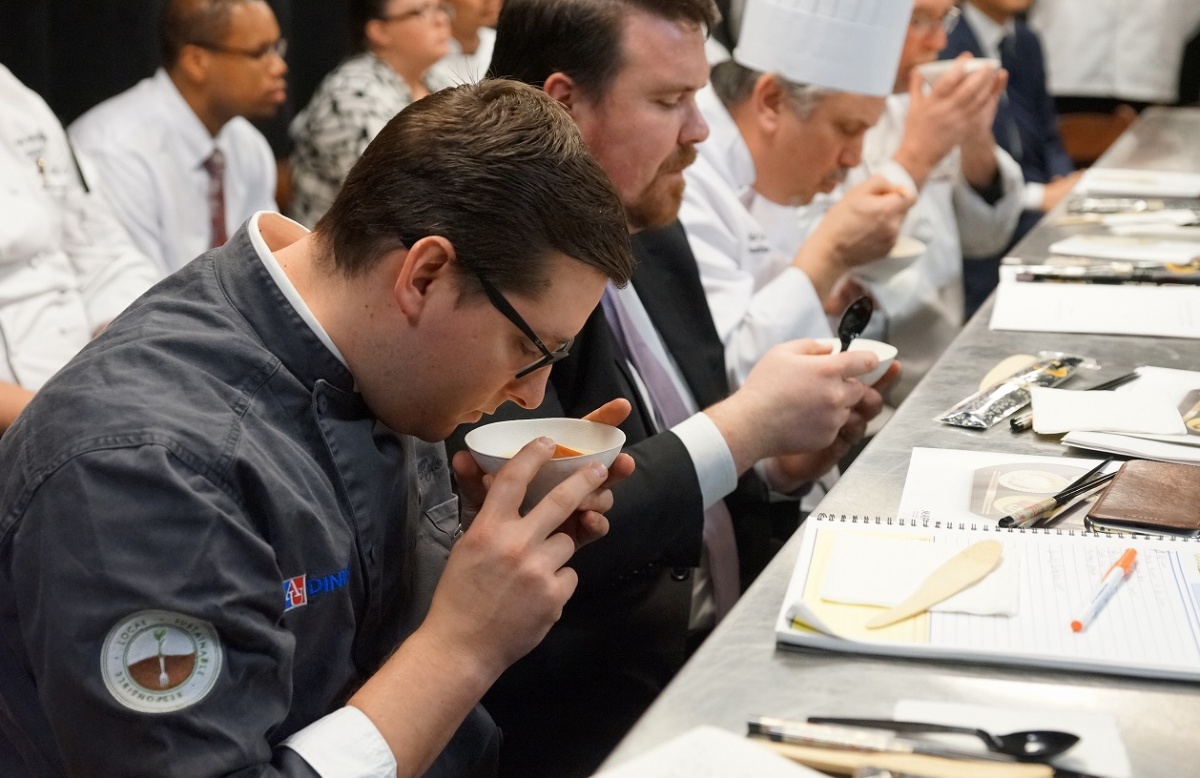
Among the responses from Aramark's chefs, the following stood out in particular: "All of the ingredients were really impressive, and it was a great learning experience for someone like me who wasn't familiar with Japanese ingredients. I hope to think further about the students' health and try to really incorporate these ingredients in the meals I develop."
Japanese ichiju-sansai principles can be applied to anything from salmon to chicken, and ingredients that have a more subtle flavor can easily be substituted. While Japanese cuisine is often thought of as difficult, if you master the basic principles you can easily use them to make meals everyday. Chef Yamada closed by stating, "I'd like to see various countries share good cuisine with each other, and think about food on a global scale."


